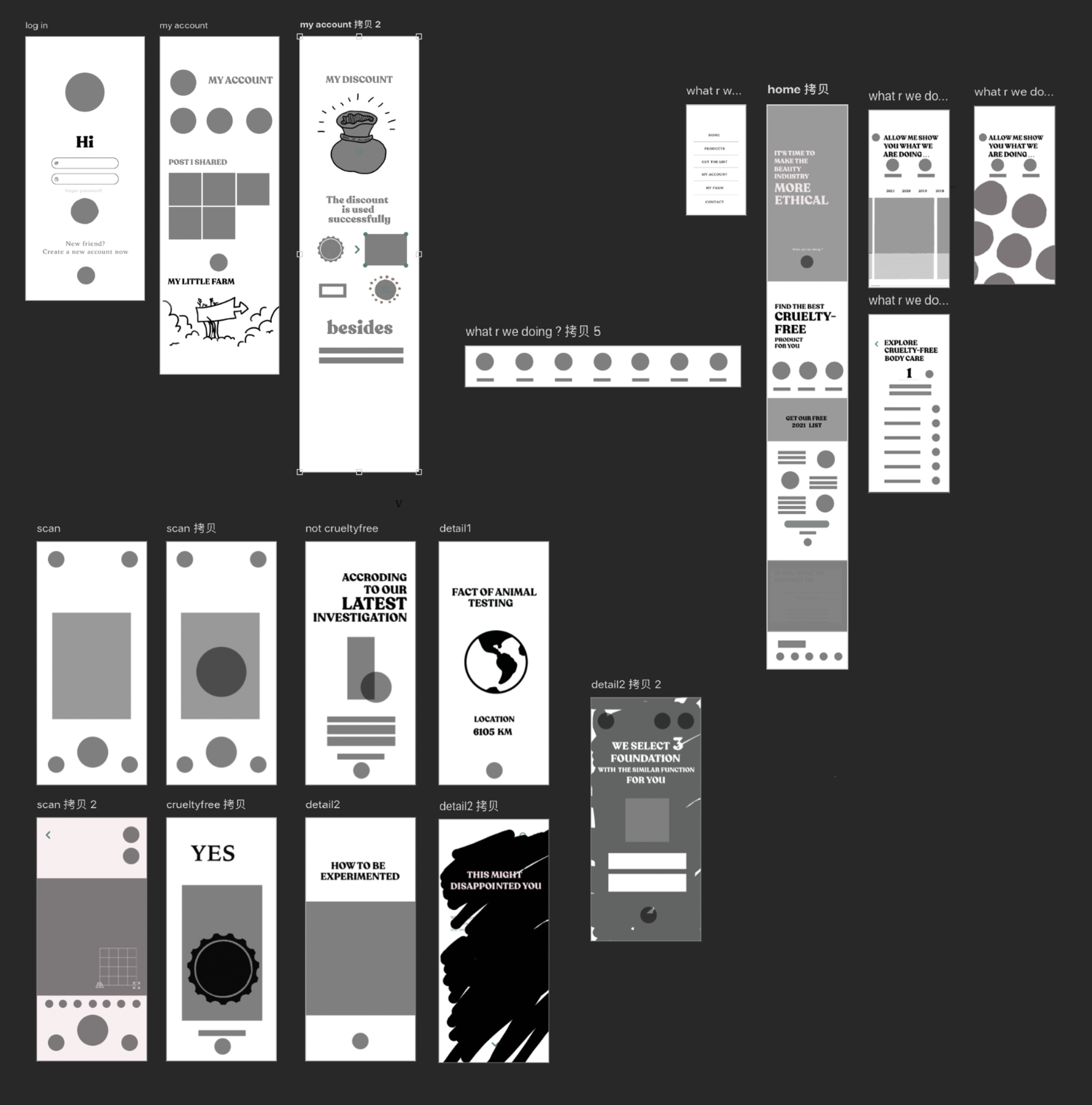This final project of the module, is an incremental step up from the earlier projects for a number of reasons. The project is tied in with the Creative Conscience (CC) annual awards – you will already be familiar with these awards from sessions earlier in the module. You will be selecting one of the CC Awards topics (broad areas of challenge) and creating your own brief with a predominantly digital response. The outputs of this project will be consistent with the CC Awards entry rules – showcasing your project in a PDF document up to 15Mb total size. Along the way, you will create high fidelity prototypes (mock-ups) for an app, website or other digital artefact, and work through all the stages of an iterative design process.
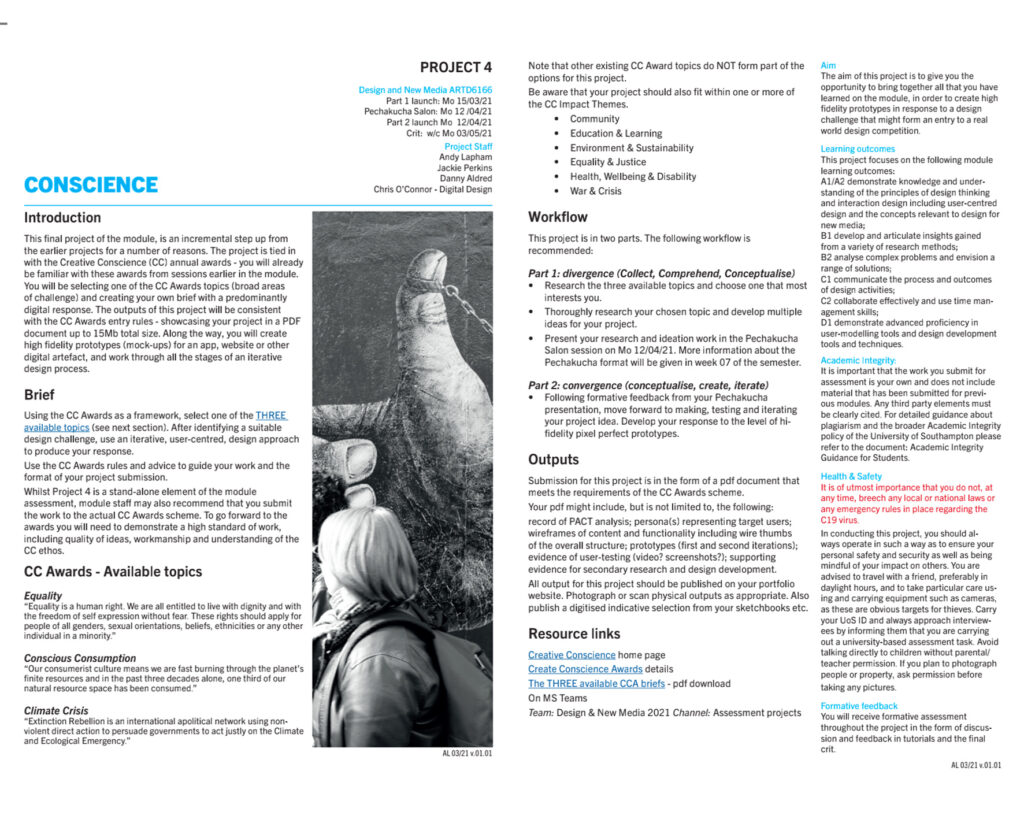
Divergence (Collect, Comprehend, Conceptualise)
• Research the three available topics and choose one that most interests you.
• Thoroughly research your chosen topic and develop multiple ideas for your project.
• Present your research and ideation work in the Pechakucha Salon .
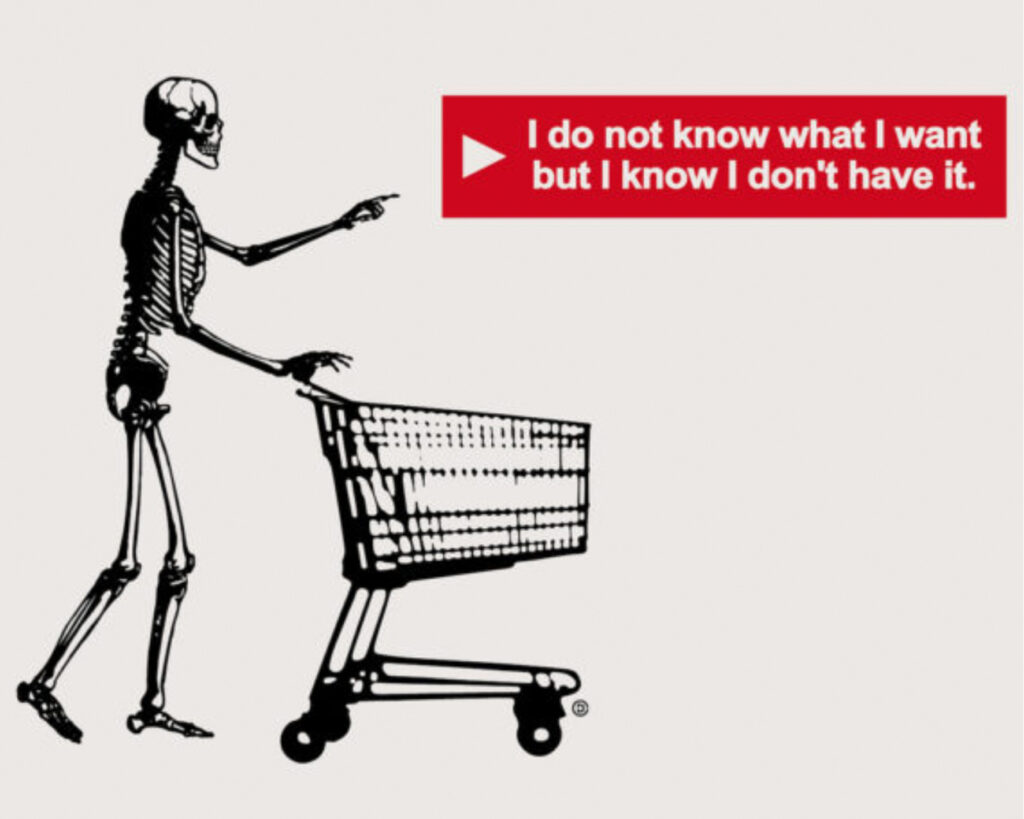
Conscious consumption refers to the purchase of goods in line with moral conscience. In general, this refers to goods that do not harm or exploit people, animals or the natural environment. The connotation of ethical consumption is also more and more extensive, mainly including:
· Choosing products using renewable energy, or at least choosing those with low energy consumption among similar products.
· Eat organic and healthy food.
· Refuse fur clothing, oppose cruelty to animals.
· Look for the “AAT(Anti-Animal Testing)” logo on the packaging of products, and choose cosmetics and drugs that do not undergo Animal Testing.
· Purchase environmentally friendly and energy saving household products such as phosphorous free washing powder and fluorine-free refrigerators;
· Pay attention to recycling and reuse.
Green spending has clearly become big business. And it is in the context of bigger business that doubts over whether purchasing is truly ethical begin to come into play. Take the example of my organic cotton top. Yes, it was made using organic cotton but where was it made and under which conditions? What about the other materials required to produce it?
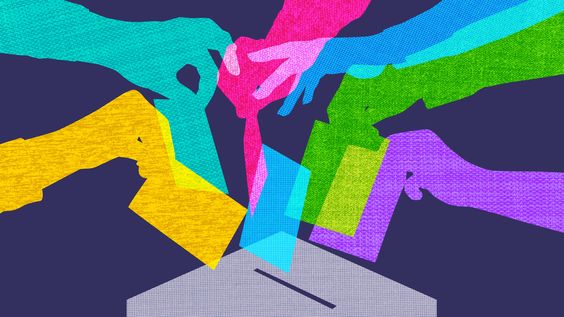
Through my research, I have summarized the following viewpoints. It refers to the purchase of goods in line with moral conscience, do not harm or exploit people, animals or the natural environment.
Secondary Research about ethical consumption
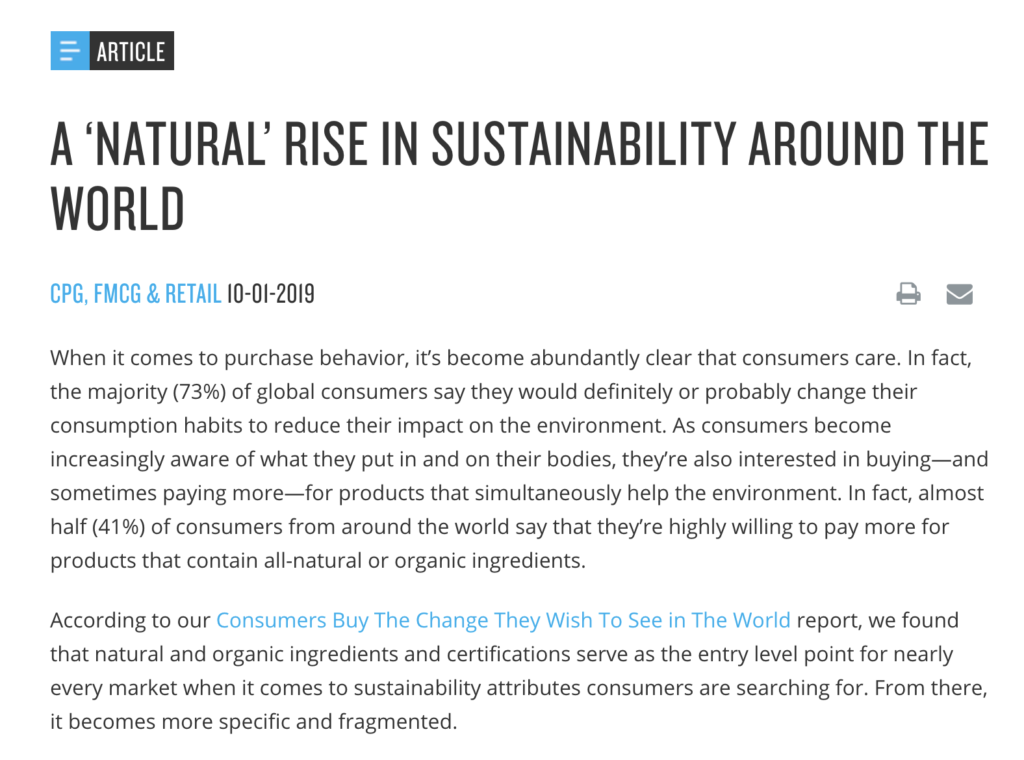
About 73 percent of global consumers said they would definitely or probably change their consumption habits to reduce their impact on the environment. Statistics show that ethical consumption in the UK has increased significantly in the past 12 years. This is a very good phenomenon, which shows that the British people have gradually become aware of ethical consumption, which is very helpful to promote conscious consumption just like a process of voting.
Voting is a special word to Conscious Consumption, it can be traced back to its developing history.

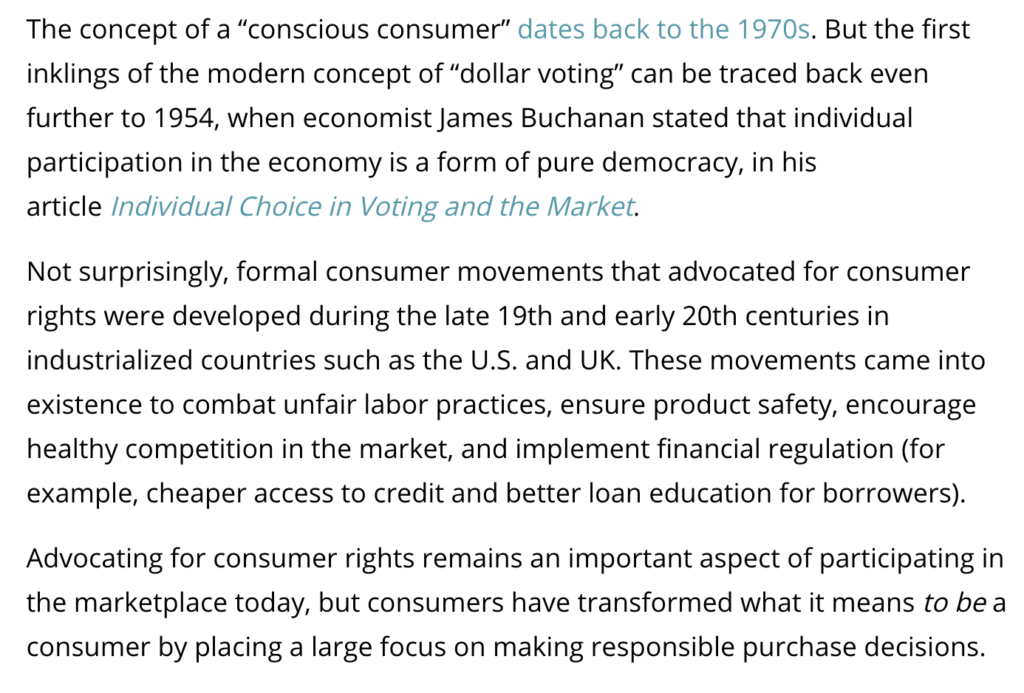
This article and paragraph below is a brief history about Conscious Consumption. Through the understanding of history, we can further understand the development of its specific content and its impact on society.
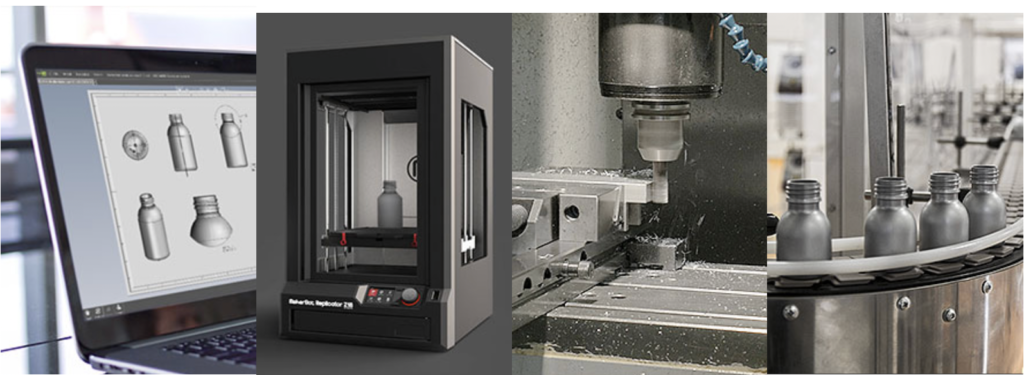
Now we turn our attention to the process of making goods. Firstly, it will be designed according to the needs. then the model will be sent to the factory for production, after that they should pass the experiment, then be packaged, and finally sent to the market for sale, We can use this line to explore and distinguish whether it is environmentally friendly and sustainable.
I found many existing problems of this line. Some of which are gradually on the right track, but some of which still exist and are waiting for improvement. Such as Experiments on animals, Labor Protection, recycling, Arms deals or the problem of pollution like images I posted below.

Primary Research
Based on these, I started thinking about my life and my conscious feature. I looked up my bills, spending records.
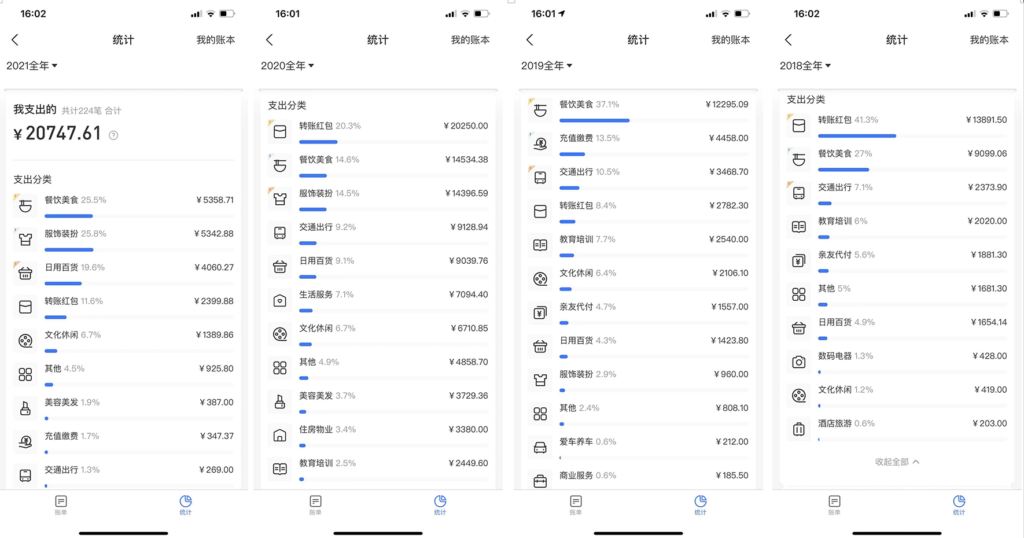
I found that most of my spending revolves around daily products(it may be contained in transfer), like skin-care and makeup. It accounts for one third of total expenditure. That is also an exploring of myself. I discovered my obsession with beauty. Even though I care about whether the product is effective or whether the ingredients are safe or environmentally friendly, I’m still likely to immerse myself in the joy of makeup. And based on this data, I realized maybe this is a common phenomenon among us. Advertisements on social networks are dazzling, they always talk about the beautification of products with a purpose, and occupy the brains of girls for a short time, so that they never forget it. Then make impulse consumption when looking through the inventory at night when their wallets are not empty. So I began to investigate about this field.
Secondary Research about beauty consumption

Reports show that the attraction to women in this field was inevitable, so I make an guess that conscious consumption might not play well sometimes.
Based on this, I start to explore when it comes to beauty and skincare, what might be forgotten in conscious consumption. There is an interview from BYRDIE, Here’s How to Be More Conscious of Your Beauty Consumption by Amy Lawrenson, updated in 2019. It helps me to broaden my scope of mind. Here are some comments about current situation:



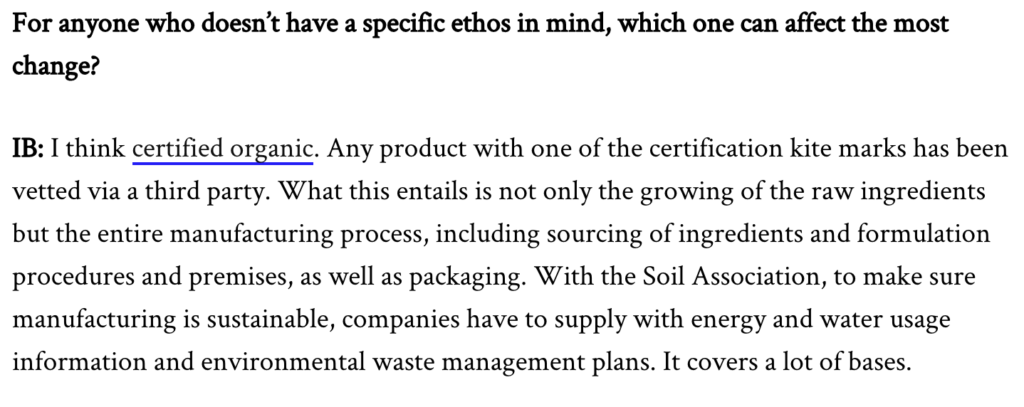
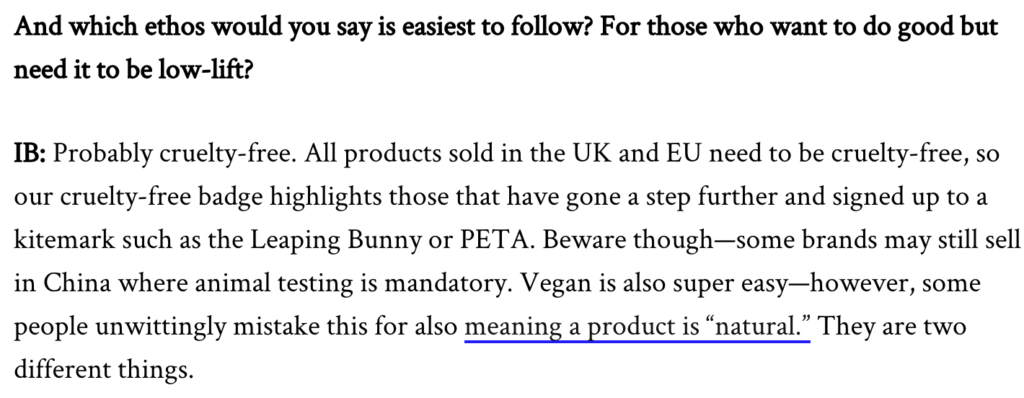

Besides, there are several relative platforms and organizations also offer relevant views and analyses, such as:

“One of the hottest trends in the beauty industry right now is the rise of the conscious consumer, an area a new study market intelligence provider PreScouter has focused on.“
—— Simon Pitman.
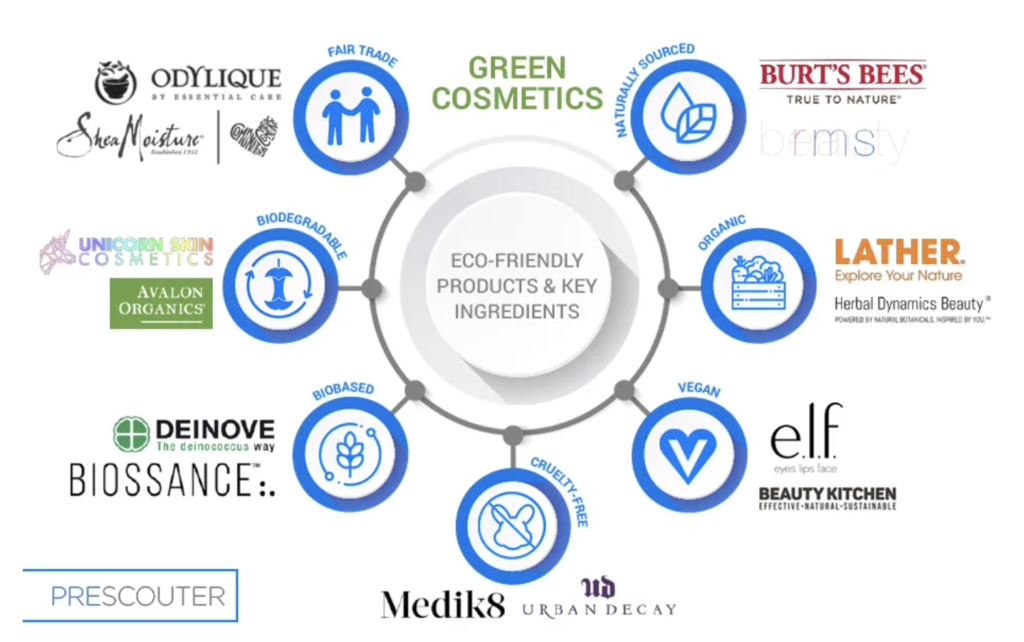
It contains these keypoints: fair trade, biodegradable, cruelty-free, maturally sourced, vegan, green , organic, … These key words have gained great attention in the cosmetics consumption in recent years as the latest conscious consumption issue.
—— Prescouter(Web)
It is necessary i need to figure out the definition of those words.
- Fair Trade:
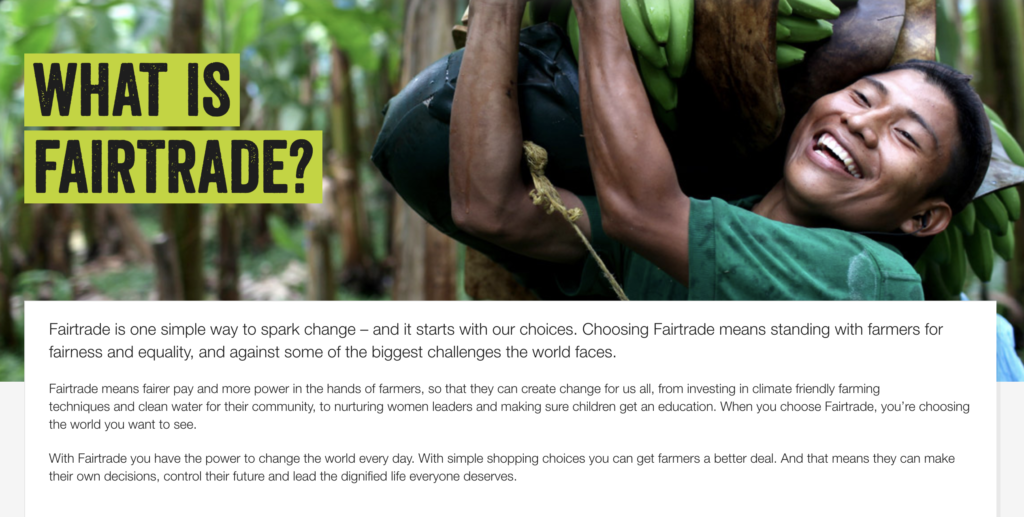
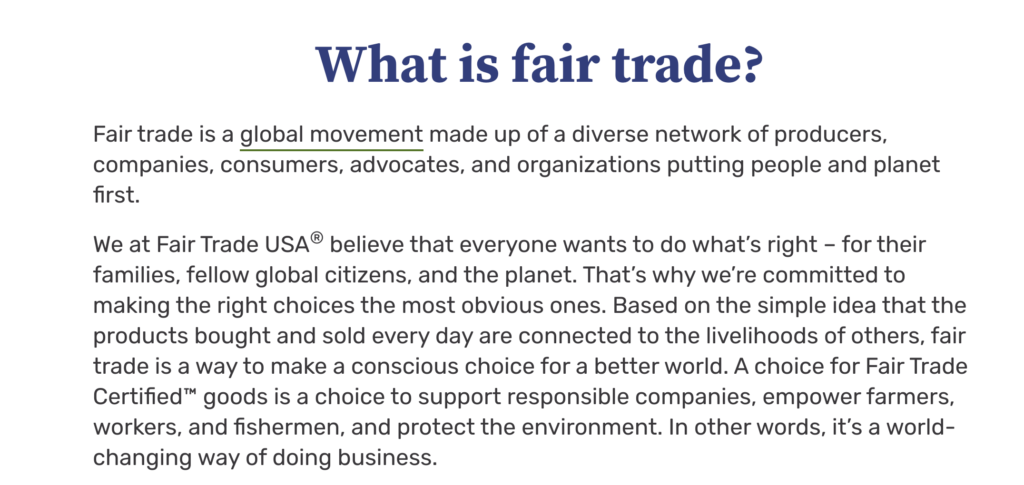
- biodegradable
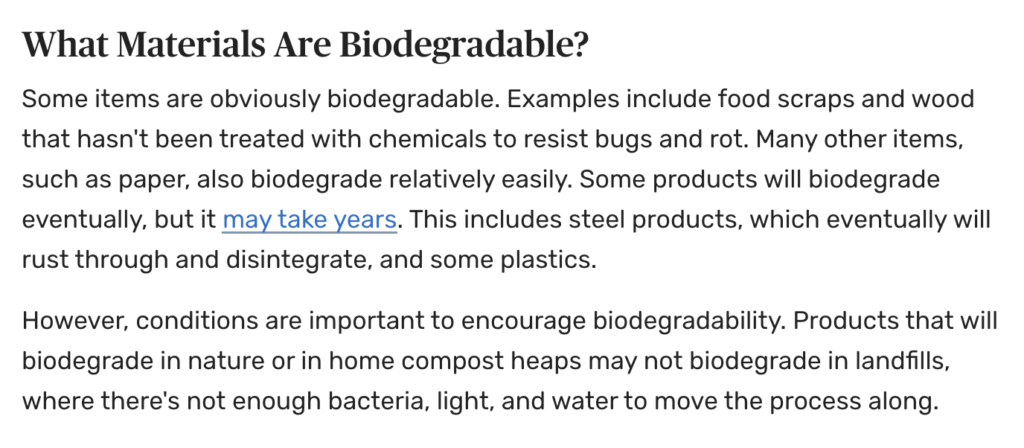
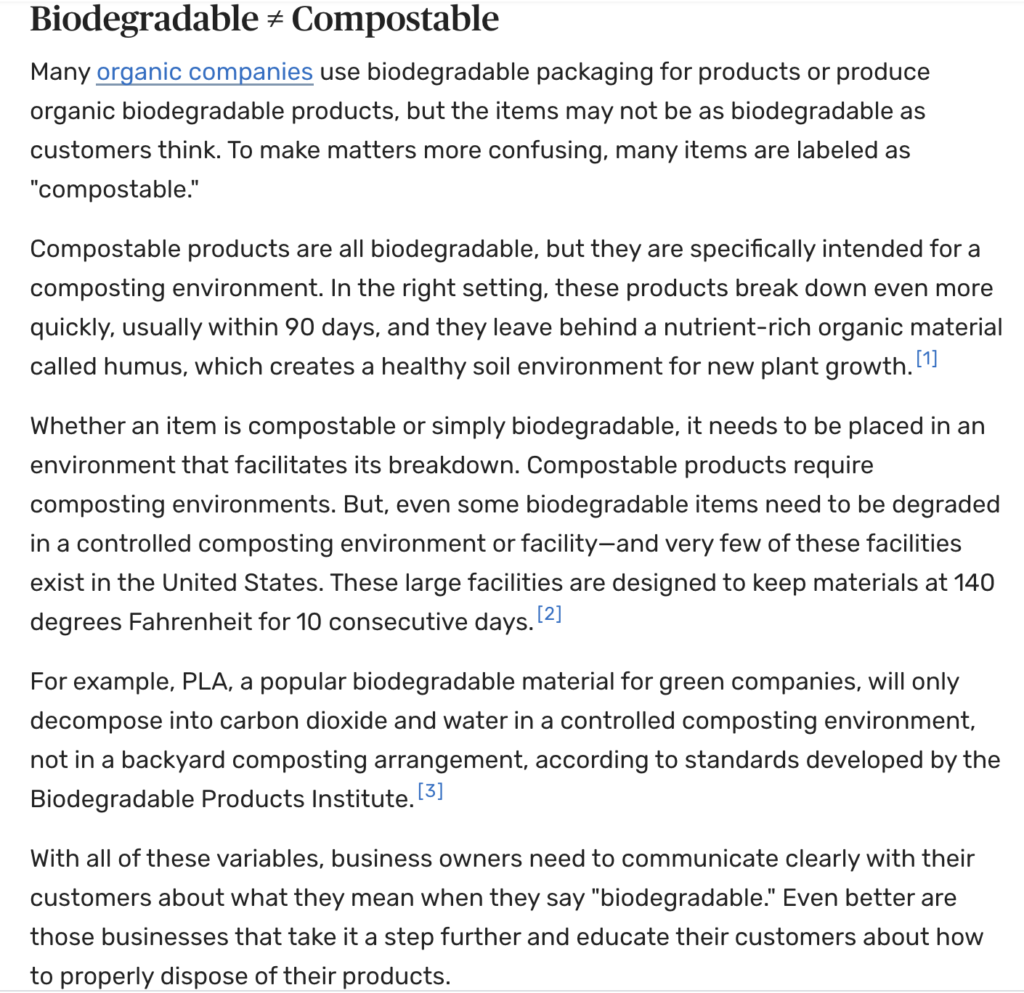
- Green and Vegan
The reason why I put those two words together is most of people might thought they share the same meaning, but the fact is they are totally different.
vegan cosmetic is that it’s a product that doesn’t contain any animal by-products. A by-product can be an animal ingredient or animal-derived ingredient. So, for example, a vegan lipstick wouldn’t contain the ingredient beeswax as this is derived directly from bees.
Green cosmetics: natural ingredients and sustainable packaging for the new beauty routine. … Sustainability is the key word when it comes to green cosmetics. The products must be obtained through nature-friendly processing methods and the plants must be bred according to organic crops.
*Vegan is not the same as green
“Green might owns a not very clear definition, but vegan does. Stating that a skincare product is vegan is great information, but it does not inherently mean that that product is safer, cleaner, or greener than any other out there. After all, petroleum and cigarettes are vegan, and neither of those is something we want on or in our bodies. Vegan doesn’t equal safe, non-toxic, natural, organic, or green – you have to do a little more homework to know what’s going on your skin.”
—— Emily Barth Isler, published in Osmia
*Green but not vegan:
Some products are not vegan, but they will not harm the life of animals, such as honey, milk and so on. When extracting these raw materials, green companies will be clear that their actions will not harm the nature, and the practices are open and transparent.
web link: https://osmiaorganics.com/blogs/blog/whats-the-buzz-is-vegan-beauty-the-same-as-green-beauty
cruelty-free
A product which is cruelty–free means that neither the product nor the ingredients or components have been tested on animals.
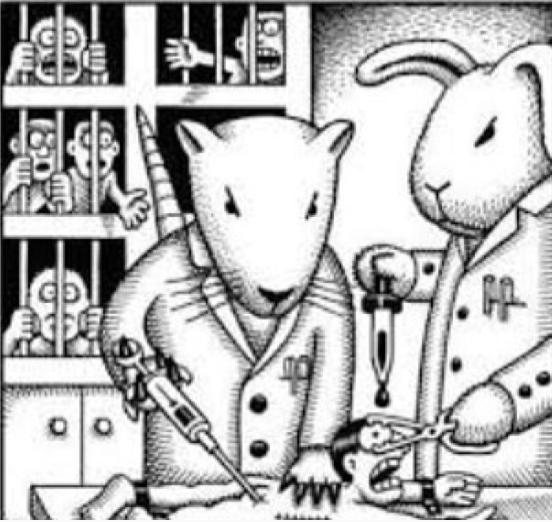
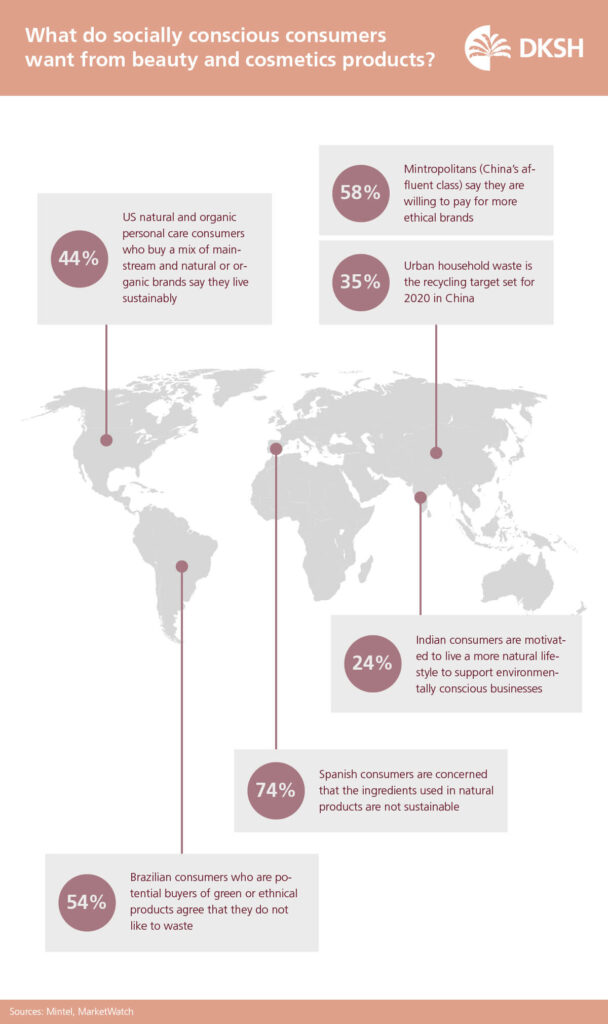

People for the Ethical Treatment of Animals (PETA) is the largest animal rights organization in the world, with more than 6.5 million members and supporters.They opposes speciesism, a human-supremacist worldview, and focuses its attention on the four areas in which the largest numbers of animals suffer the most intensely for the longest periods of time: in laboratories, in the food industry, in the clothing trade, and in the entertainment industry. We also work on a variety of other issues, including the cruel killing of rodents, birds, and other animals who are often considered “pests” as well as cruelty to domesticated animals.
PETA works through public education, cruelty investigations, research, animal rescue, legislation, special events, celebrity involvement, and protest campaigns.
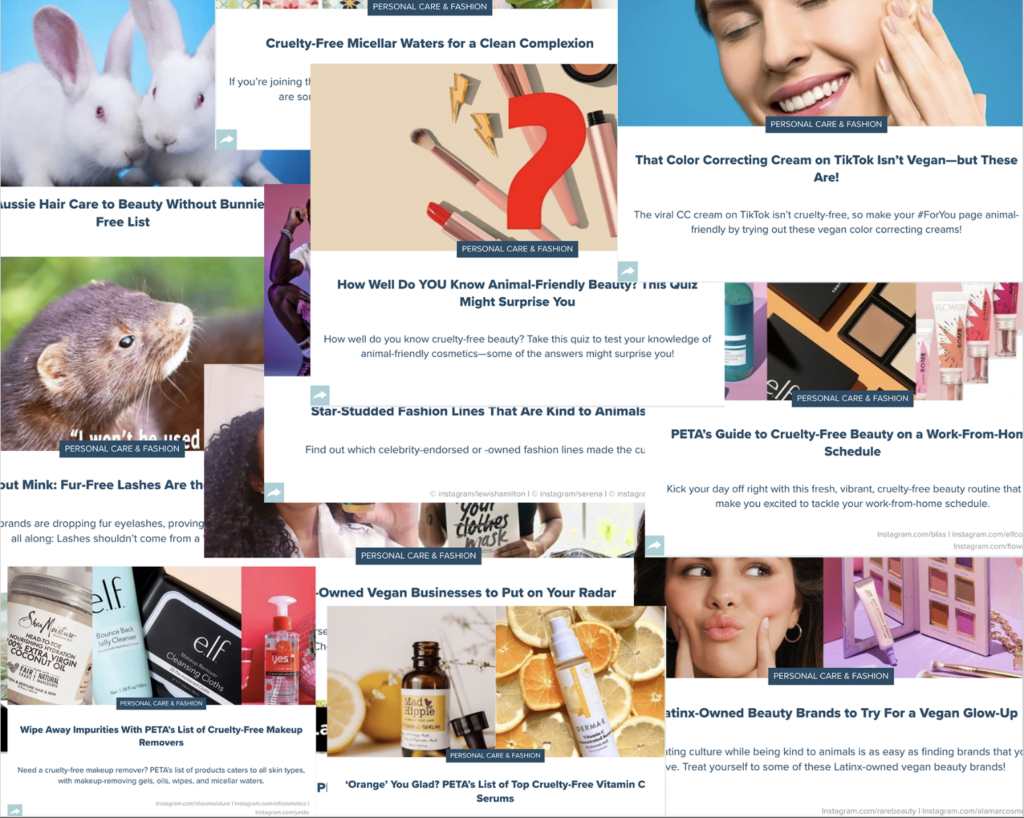
This is a blog by PETA about Personal care & Fashion. It collected their achievements(what they striving for animals/ their research about cosmetics brand), Celebrities we work with(Kasha/ Selena Gomez/ Kim Etheredge / Wendi Levy/ Cashmere Nicole/ Laura Nelson/Obia Ewah), problems in this area, some test, Related popularization……
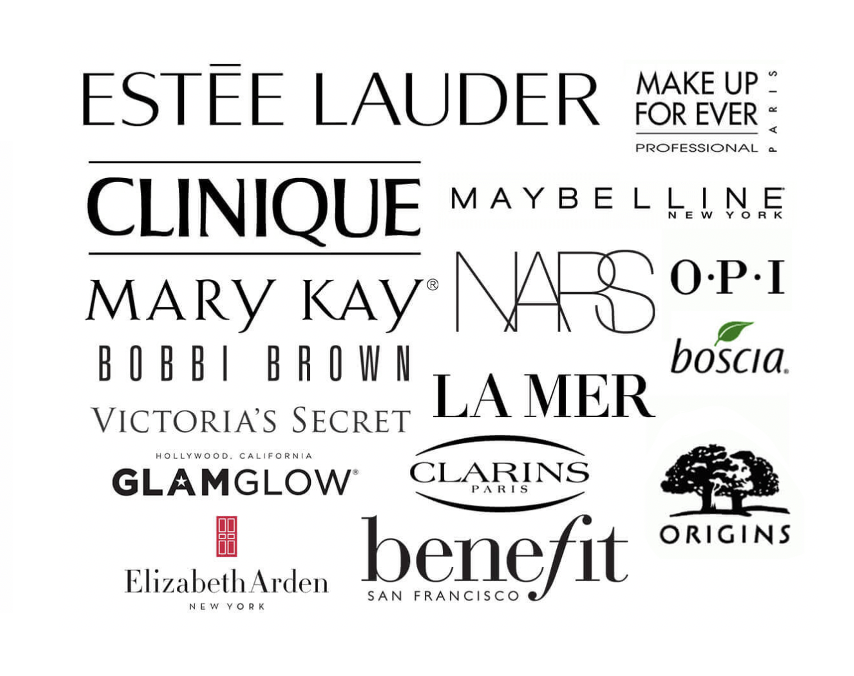
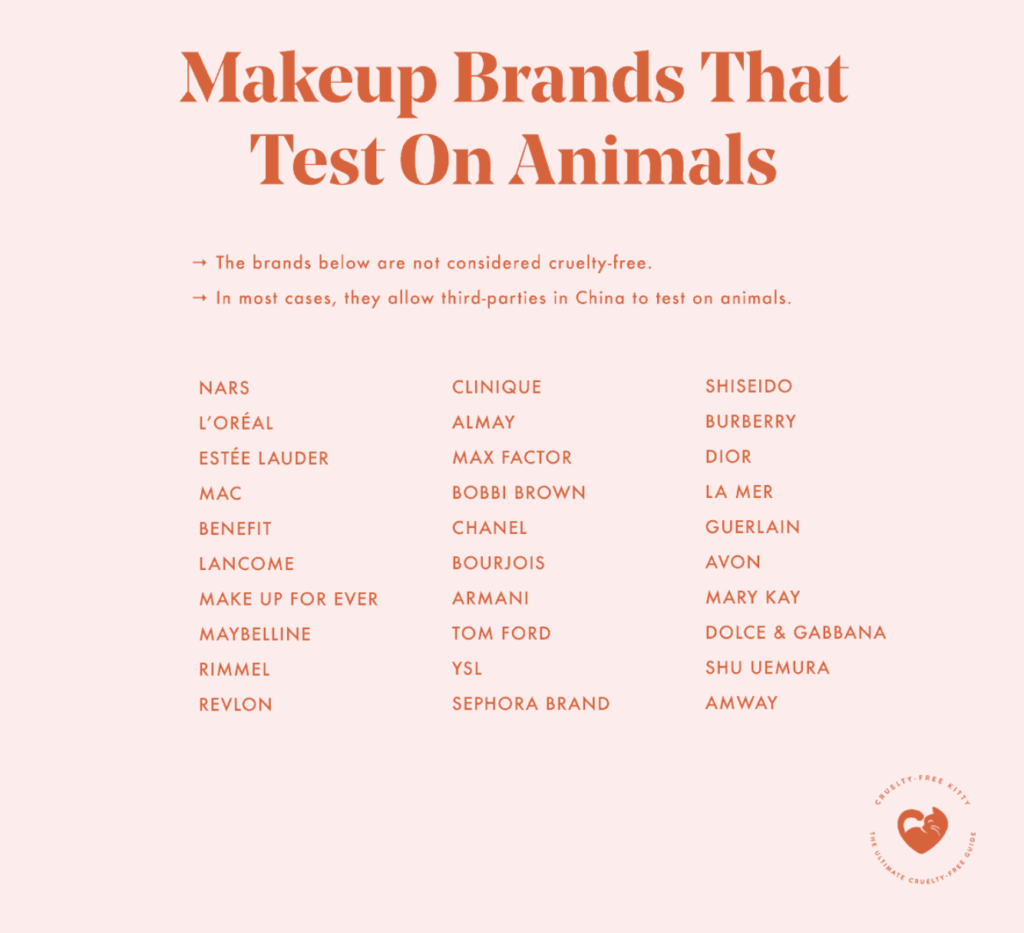
Here are some of the top cosmetics brands whose products are still tested on animals—and some brands that don’t test on animals that you should support instead.
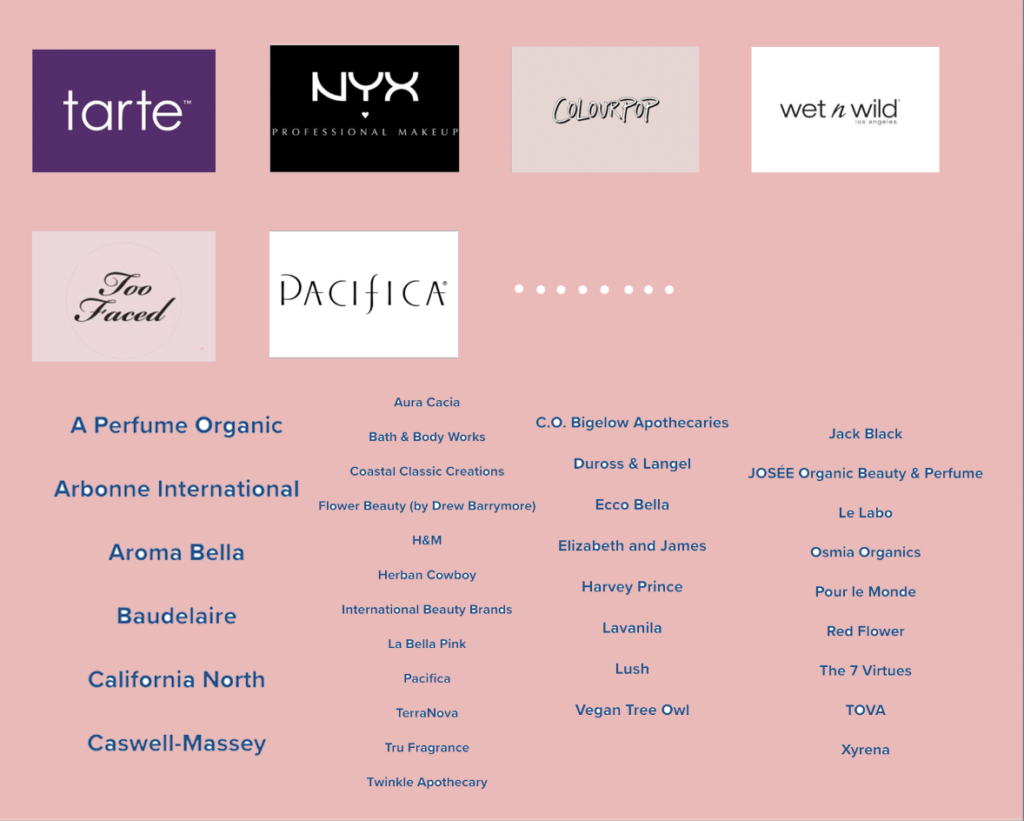
These are some of the brands mentioned in PETA that they have cooperated with. They all oppose animal experiments and adhere to the concept of Cruelty-free. It pushed me start to think about what I can do for them.

About 36% of women prefer to buy from cruelty-free cosmetics brands, new data(published in 2018) from virtual beauty app Perfect365 has revealed. Investigating the importance of cruelty-free cosmetics, the company asked 15,000 women via its app whether they would stop using a beauty brand that tested on animals, with 43% saying that they would.The survey also revealed how more consumers are consciously choosing cruelty-free beauty, as 24% of respondents said they used PETA’s website to research which cosmetics brands tested on animals before buying. It can be seen that although cruelty-free has begun to develop for a while and we have met many people or organizations who are willing to support and help us, there are still more than half of women who are not aware of or do not understand this concept, which is the significance of my decision to do this project
Based on this, I further decided on my design direction. I want to provide more opportunities for people to access more affordable cruelty-free brands that reject animal testing.I plan to consider a system, which collect different brands (both cruelty or cruelty-free), they will be compared and recorded with the rules of cruelty-free. It will be a mobile app to promote green shopping for young people like me. To help them learn more about the products they use and encourage them to focus not only on their own physical beauty, but also on the beauty of nature.
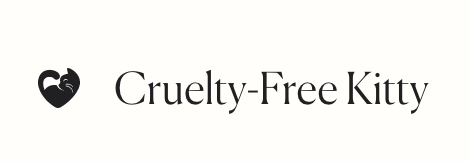
This is a platform who aim to help eliminate animal testing,their goal is to make it easy for everyone to shop cruelty-free. They vet brands and ensure no loopholes are being used so people can vote with their money and find ethical products you love.

I would like to use the brands already included on this site for reference, based on them. At the same time, I would advocate ingredient comparison. We need to know not only whether the brand has done animal testing, but also what ingredients are cruelly put on the animals, and to initially replace recommendations based on efficacy and other selection criteria that people want.
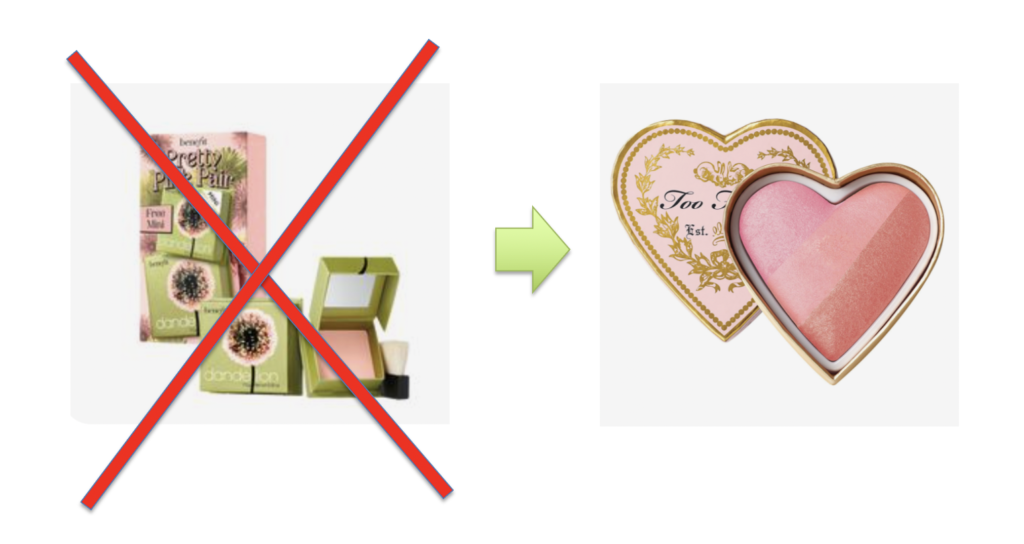
After confirm what i will focus on, I start to think about my initial ideas about 1. What does my app look like? 2. what does it need to be included. 3. In which way of thinking can more clearly understand what I want to express?
Idea NO.1:
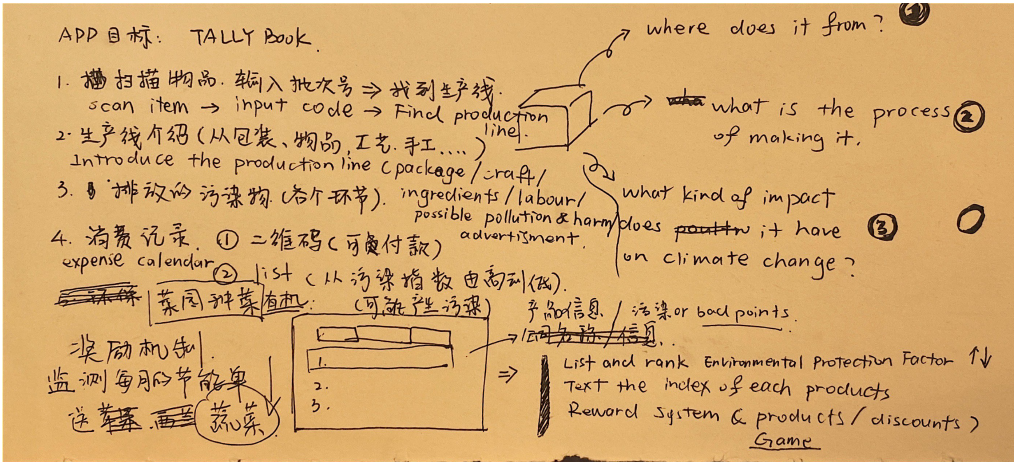
My first idea is a attempt, I try to describe every step that I want to explore and showing such as Follow up the production process, interact with my visitor, even how to encourage them. its quite like a product museum or a mini factory. That is very important for me to understand what factors might be related to conscious consumption. However, After a lot of experimentation, I think this method puts too much pressure on the reader, it might be not the best way to spread.
Idea NO.2
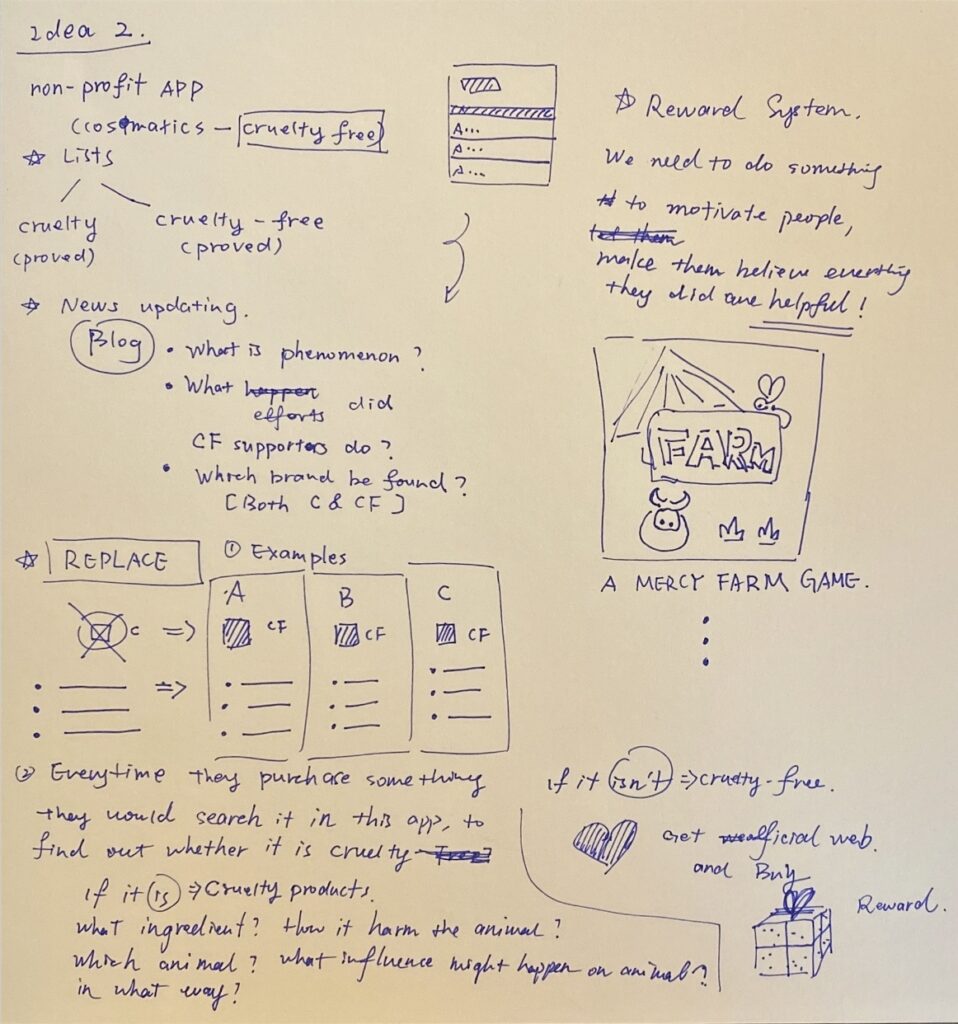
Idea NO.2 is another different kind of structure. I attempt to regroup the function I want to display. The most important point is a concept of replace. I believe There is nothing irreplaceable in beauty. I want to tell people possible replace products from different varieties, such as function, ingredient, colour, fragrance and so on. everytime they want to buy something, they can find out whether it is cruelty-free, it can remind them from time to time. Besides, reward system is still a good way to attract people, it can be run as a simple game.
PACT Analysis:
- People & Content
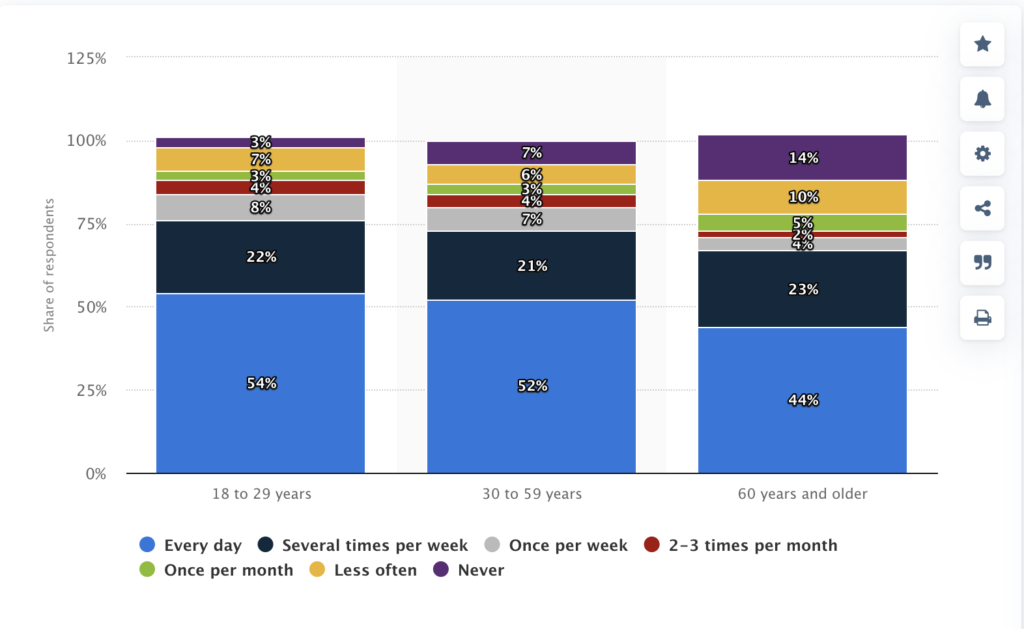
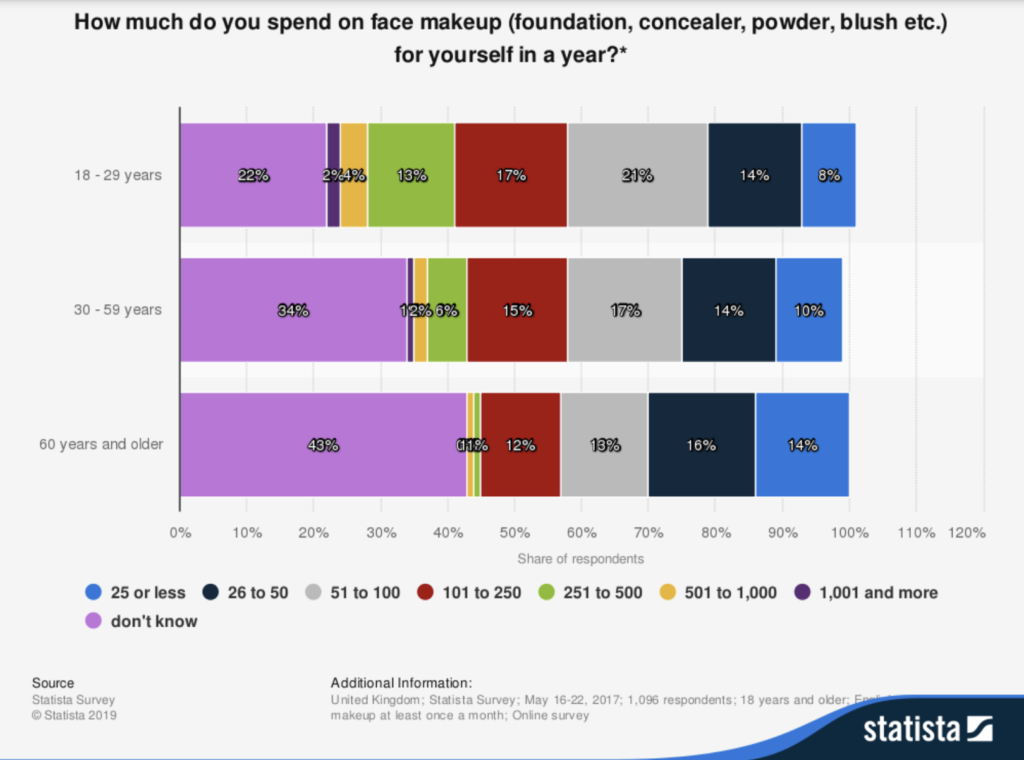
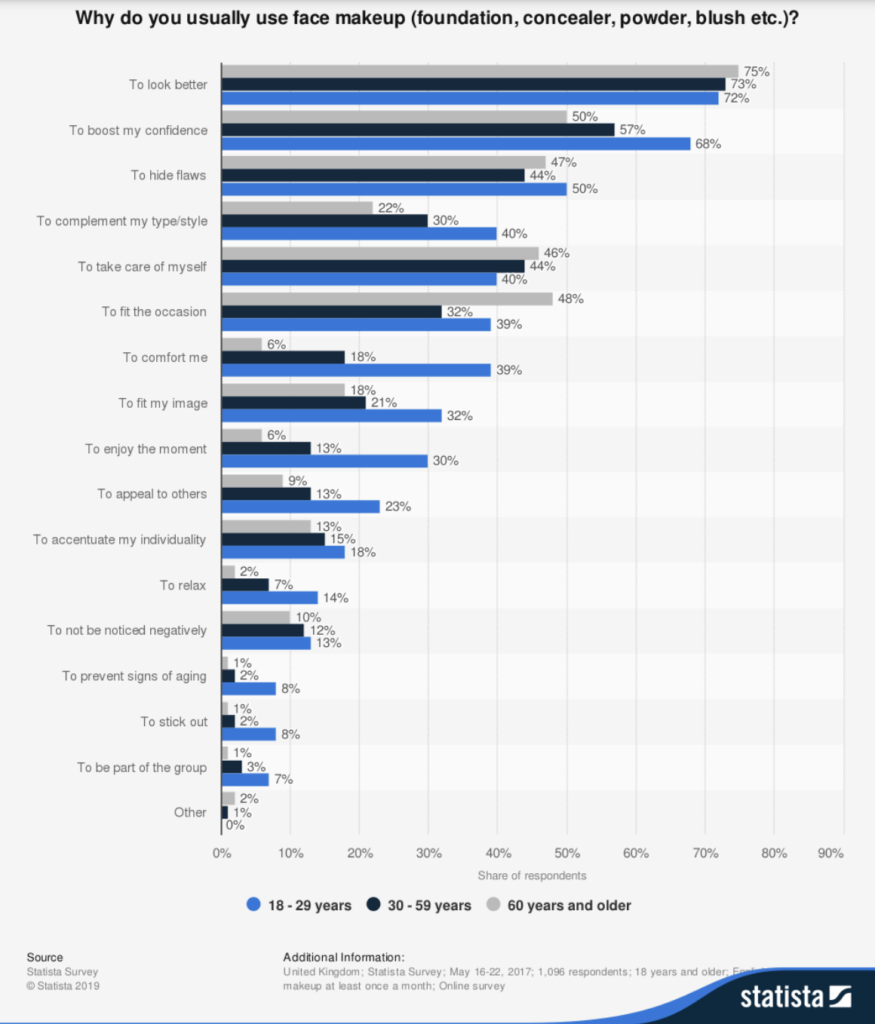
Here are two report i found on Statista, it shows that up to 70% people aged from 18-29 and from 30 to 59 are very keen on skin care. People from 18-59 seems like more willing to spent more money on makeup. Based on them, my target users are women who aged 18-50. They are passionate about skin care and makeup, most of them will buy these products out of curiosity or impulse, some of them are very conscious, while some of them pay more attention to the pursuit of product effects.
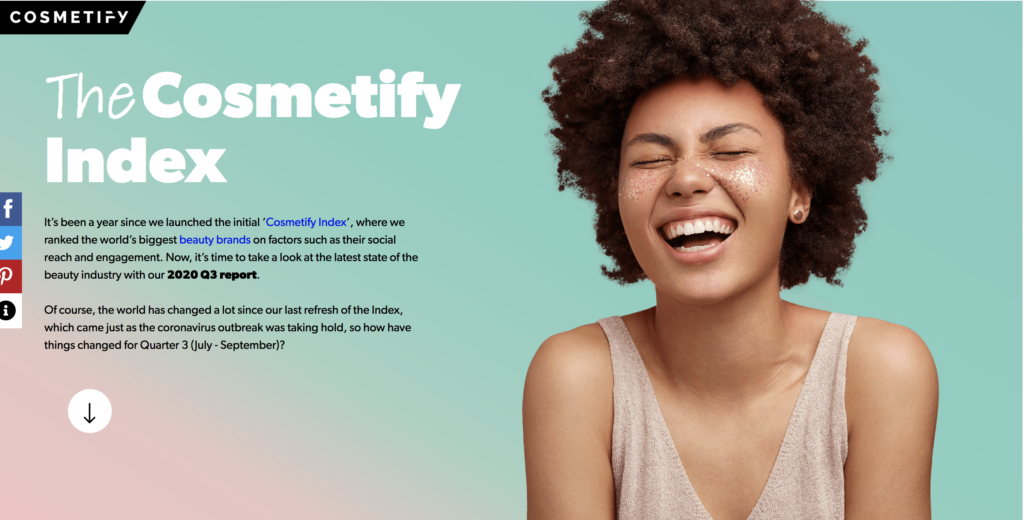
This is a product voting platform called the Cosmetify Index, which is very instructive and directional for young people to buy, it includes Hottest Beauty Brand, Ranked, The Biggest Social Following, Each Country’s Favorite Brand, Cosmetify’s Most Popular Sustainable Brands. They can help my project to be closer to young people.
Keywords: 18-50 woman, passionate about skin care and makeup
- Activity & Technology
After analyze people and content, I start to focus on what activities will happen in this app and how to connect it with phone’s technology. Although it is a public information sharing app, I still hope it can make more interaction with users. So I start to searching for some reference, trying to find out more playful communication between users and phone.
This is an app of WWF (World Wildlife Fund). It’s a charity app that features 17 (and growing) of the world’s endangered wild animals. What most appealing me is not only the animals but also the feeling I play it. I can communicate it in different ways such as Click, Rotate, Erase, Intuit and Shake. Although it is a cruel truth, they describe the story in a way that helps people easy to accept.
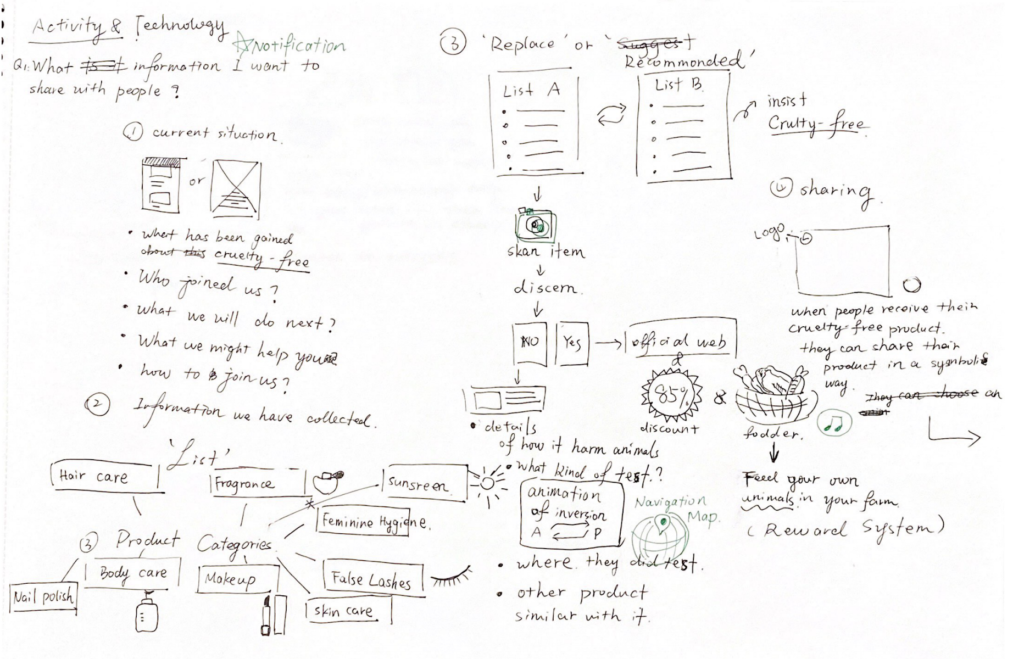
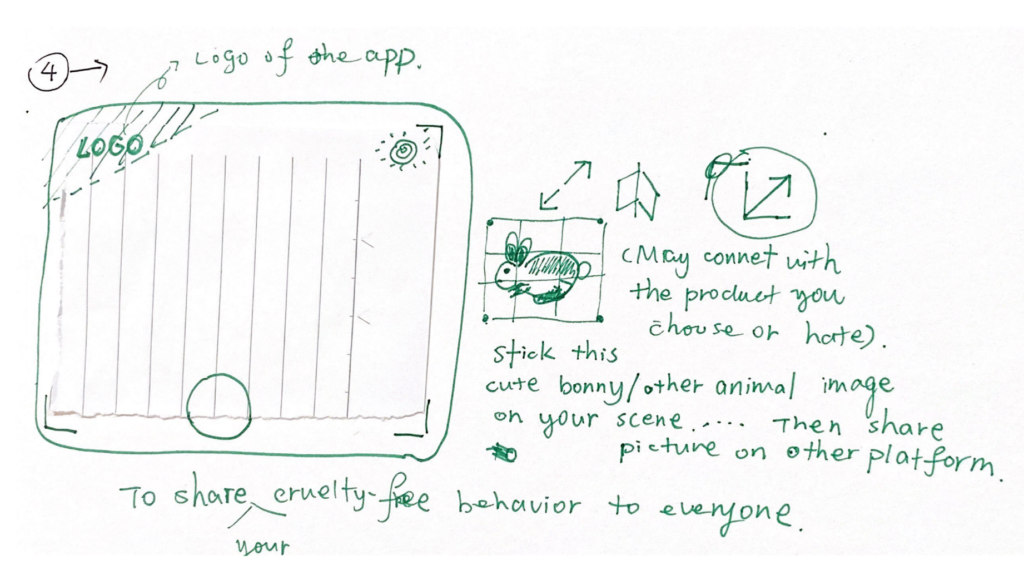
Persona


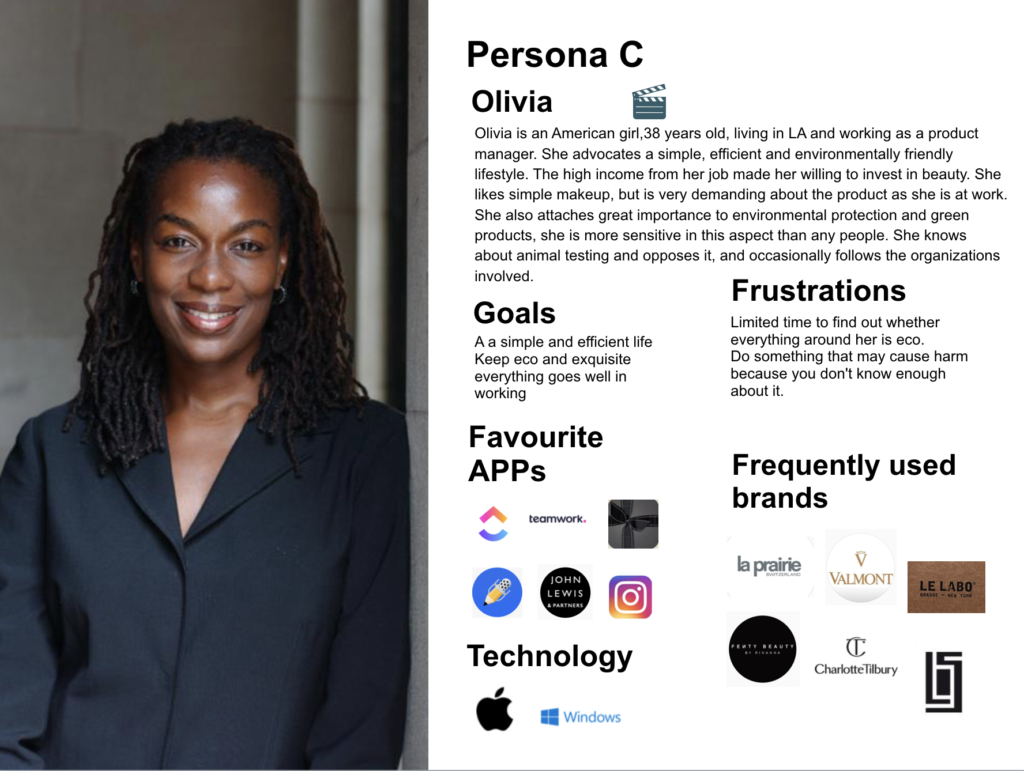
After the PACT analysis and Persona, I start to think about the wireframe of my APP.
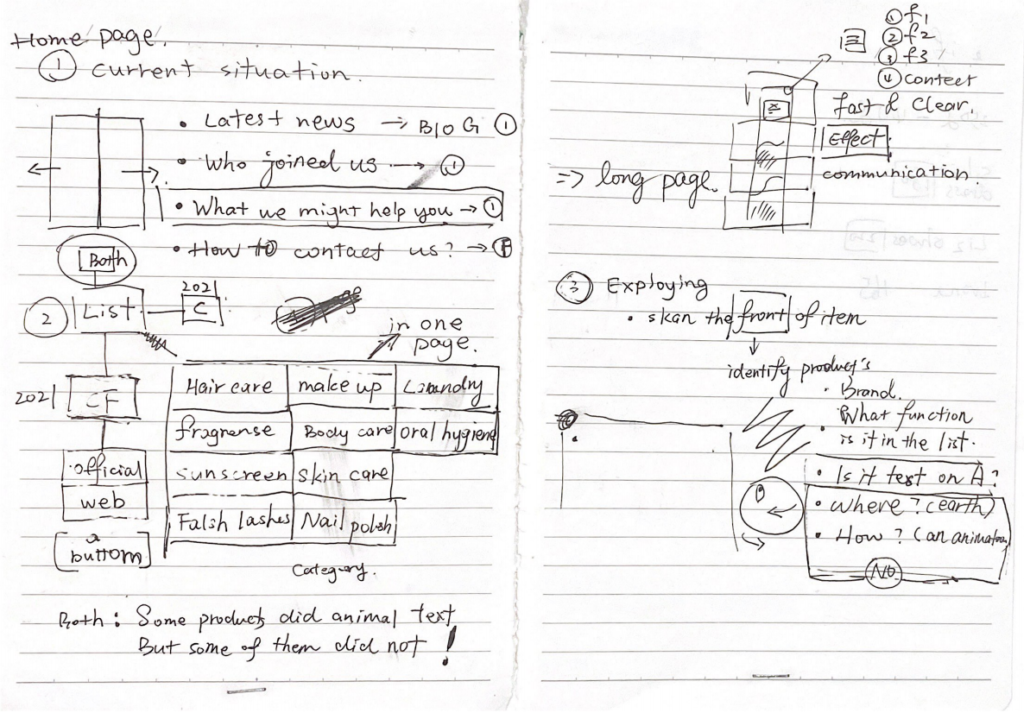
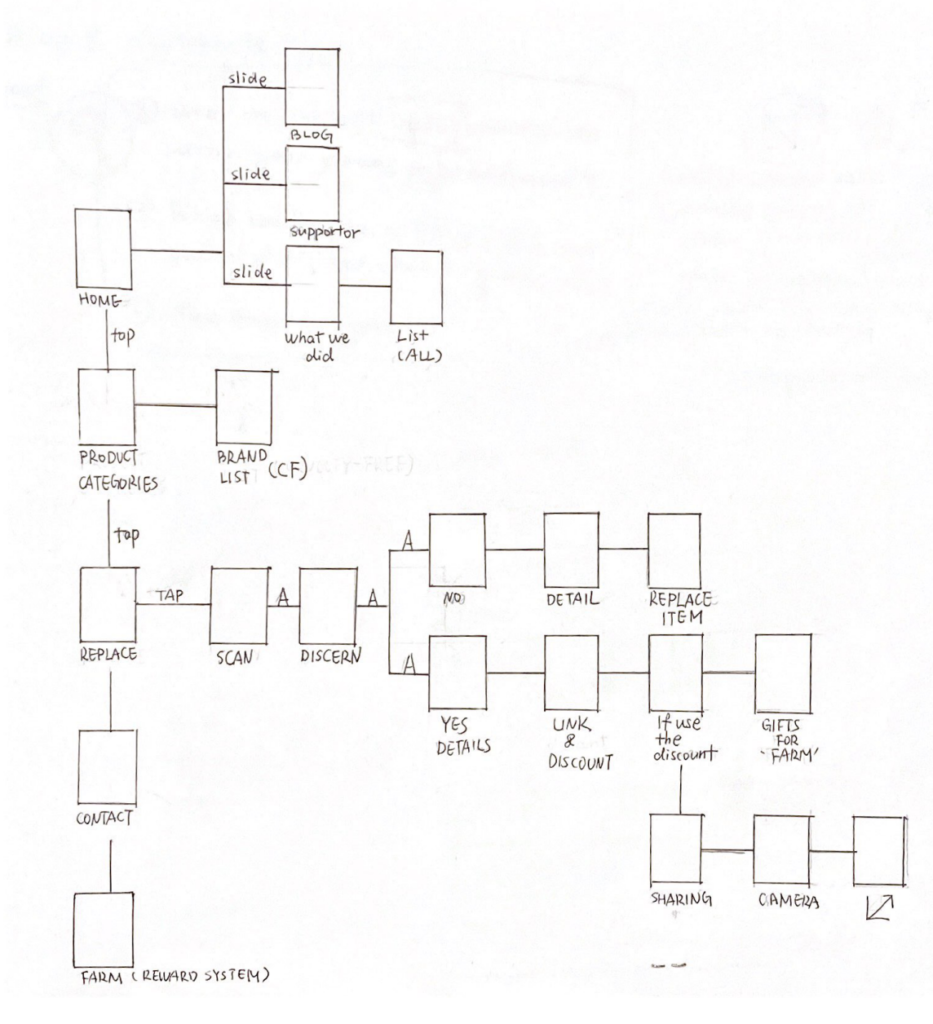
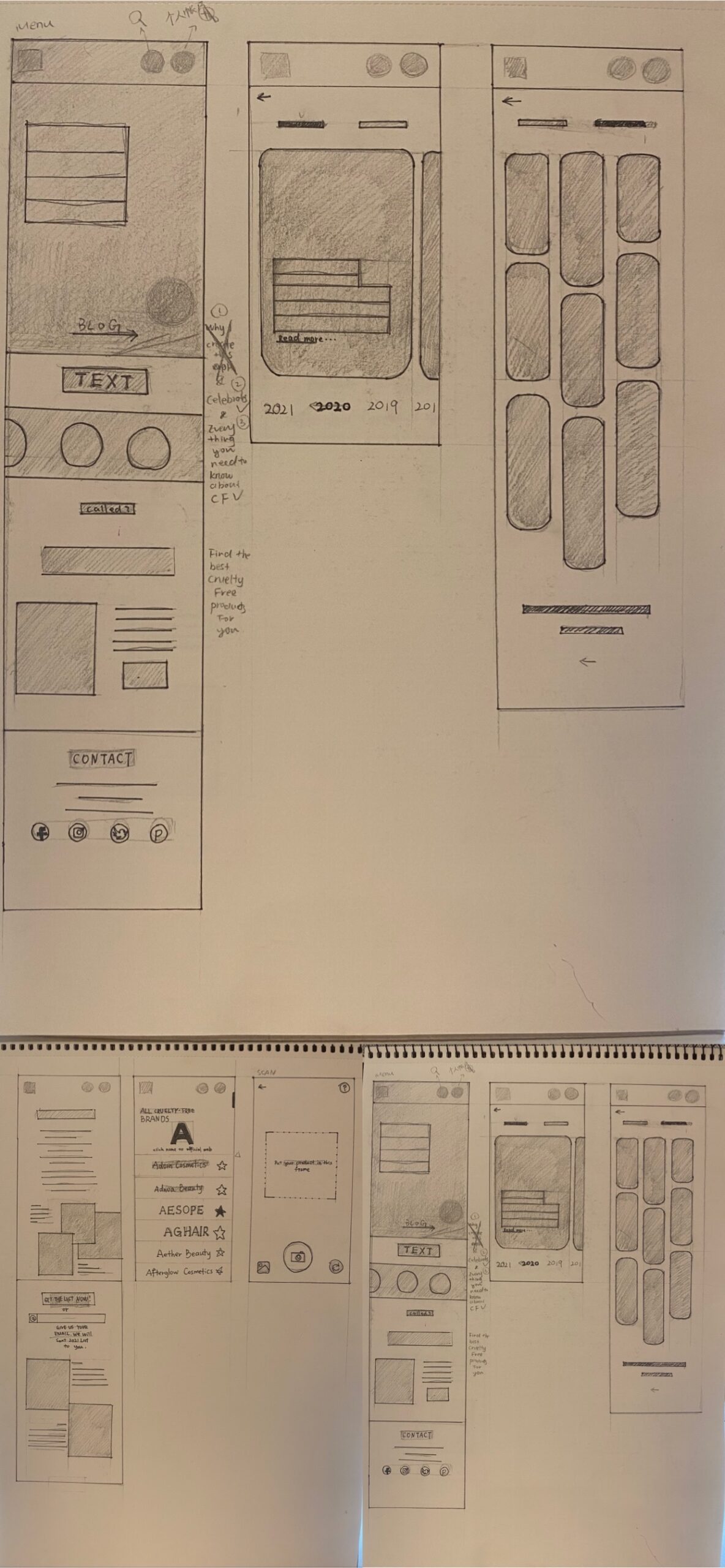

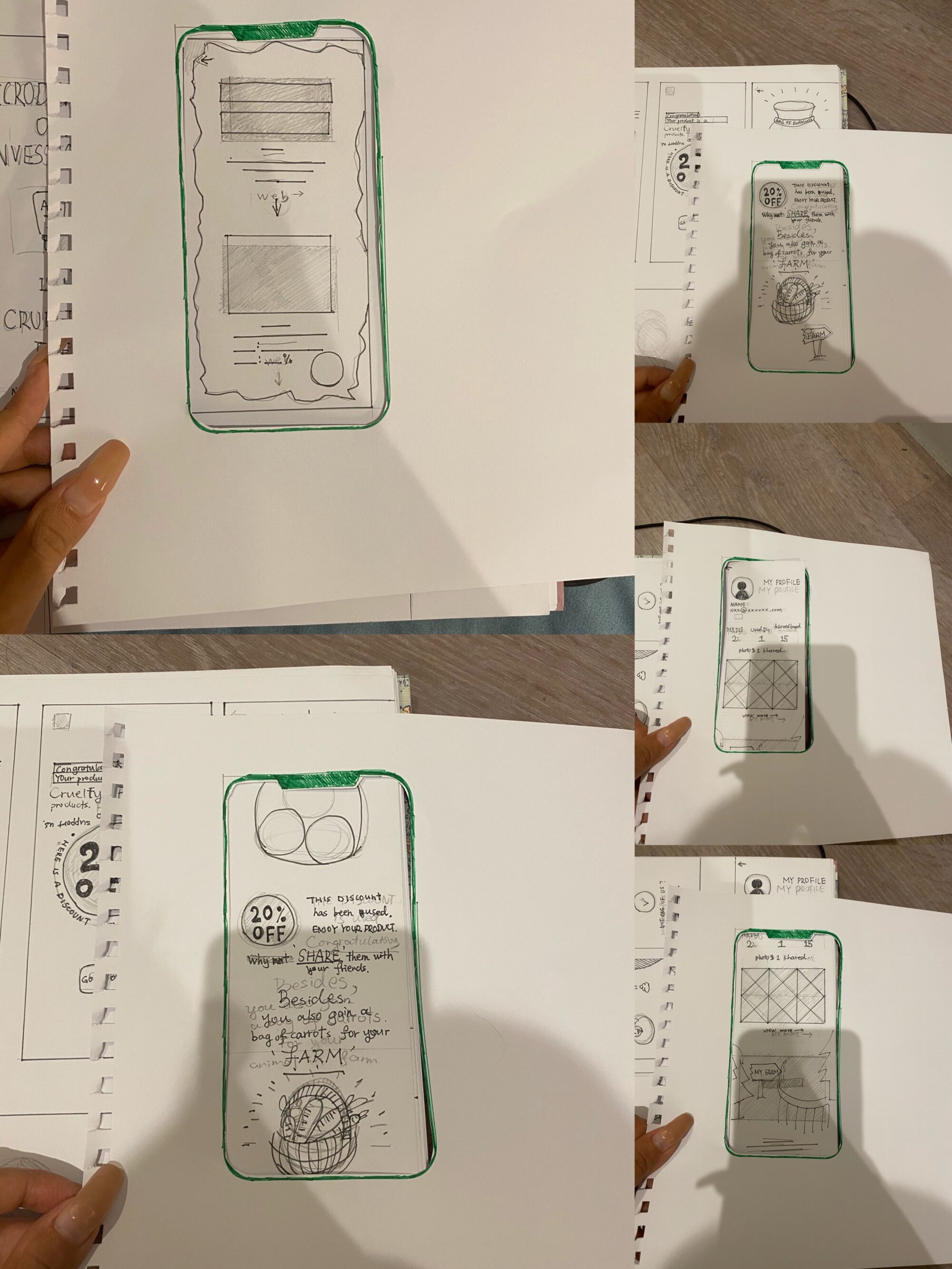
Testing

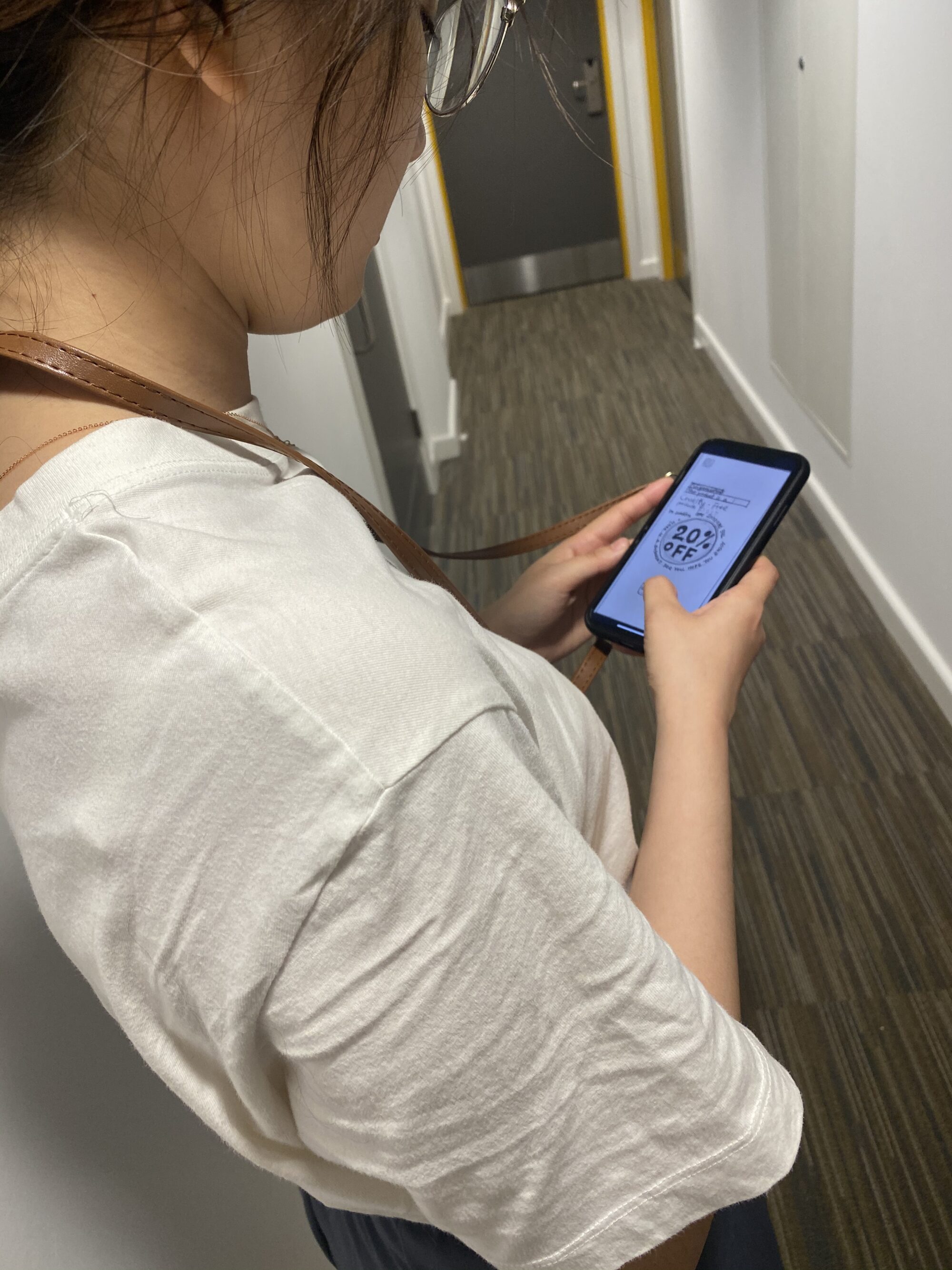
Testing feedback:
- The wireframe is clear, but some of pages are a little bit complex, I need to simplify.
- Icon design is great, express accurately.
- ‘very easy to understand, if add more picture, that would be better
- Cute visual identity, maybe you can add more buttons, especially the farm.
Based on testing feedback, I start to do my love-fidelity prototype.
